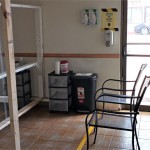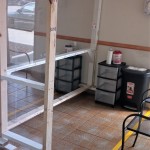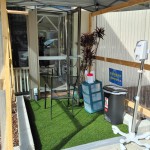


Visitation Questions & Answers
A: Per CDPH AFL 20-22.6, Released March 8, 2021 https://www.cdph.ca.gov/Programs/CHCQ/LCP/Pages/AFL-20-22.aspx, testing of visitors prior to indoor visits is only required for visitors if the facility is in a purple tier. Most facilities in the state are now in a red tier per the California Blueprint for a Safer Economy website https://covid19.ca.gov/safer-economy/.
Q: Even though our county is in the red tier, our policy is to test all visitors as a best practice. Do you have recommendations to respond to visitors who refuse to be tested?
A: It is acceptable to continue to test visitors in the red tier, however, it is not a CDPH requirement. Per CDPH AFL 20-22.6 https://www.cdph.ca.gov/Programs/CHCQ/LCP/Pages/AFL-20-22.aspx testing visitors is only required in counties that are in the purple tier. Regarding visitors refusing to follow your policies, if your facility is in a purple tier county, you could make a case to not allow indoor visitation for visitors that refuse the test. An alternative would be to not allow them indoor visits, but you can offer them outdoor visitation as an option. If your facility is in the red tier, or a lower tier, I’m not confident that you can make that case for visitors. You can encourage them to be tested, but if they still refuse, it would be ideal to offer them an outdoor visit.
A: We have heard about situations like this that present a safety risk for residents and staff. It’s important to view these situations in the context that you as the leader of your facility are doing what’s right to protect your residents and staff in your facility. If the risk of exposure is high, you have the right to call the police to protect your residents and staff. Be sure to use your best customer service skills to accommodate your visitors while following public health guidance and try to avoid these issues before they present at the door and escalate. In those instances where you have visitors that you can’t control and are not able to get them to follow the facility’s infection prevention guidance, it is your right to ask them to leave politely. Keep in mind that emotions are high and put yourself in their shoes. Many of the visitors have not seen their loved ones in a long time so it’s important for them to hear that you understand and have empathy to their situation. Let them see that you are doing your very best to protect all of the residents and staff.
Q: What should we do if a visitor has difficulty breathing with an N95 mask during an indoor, in-room yellow zone visit. Can we explain the risks and benefits to them, or should we end the visit?
A: The PPE is used for the visitor’s benefit, as much as it is for the resident and the community at large. From a public health perspective, we are trying to prevent exposures. In this scenario, it is reasonable to explain the risks and benefits to the visitor of wearing a regular face mask. They need to know that a regular face mask is not likely going to provide them adequate protection. They also need to be reminded of the importance of maintaining distance. If the resident ends up testing positive, the visitor needs to understand that they are considered exposed and higher risk than if they were wearing an N95 respirator, so they will need to quarantine for 15 days. Try your best to accommodate their needs and open the windows to get better ventilation in order to reduce the risk of spread as much as possible.
A: Yes, both of these scenarios are acceptable, and the resident does not need to quarantine or be tested upon return unless there was a known exposure.
Q: What PPE is needed for visitors in the yellow zone? Can residents in the yellow zone leave their room for visitation outdoors or in a large communal space? What if they have roommates?
A: Per CDPH AFL 20-22.6 https://www.cdph.ca.gov/Programs/CHCQ/LCP/Pages/AFL-20-22.aspx, indoor, in-room visitation is allowed in the yellow zone and full PPE (same as HCP) is needed for visitors including gown, eyewear (goggles or face shield) and an N95 (does not need to be fit-tested; teach visitors how to do a seal check). Visitation outdoors is also allowed for yellow zone residents. If the visit to the yellow zone resident is done outside, visitors only need to wear a face mask for source control. Note that if the resident in the yellow zone is unable to wear a face mask, it would not be safe to have them come out of their room for outdoor visitation or in a communal space. Regarding roommates, it is ideal if the visit can be done without the roommate in the room in the yellow zone. If that is not possible, it’s important to emphasize the importance of proper use of PPE, social distancing, drawing the curtains, and hand washing.
Q: Can there be some writing in AFL about visitation and admission while we have an “outbreak”? We are hesitant to admit visitors, but our local public health department wants us to continue visitation.
A: Yes. You should continue visitation during an outbreak in the green and yellow zones. It is acceptable to offer indoor and outdoor visitation during an outbreak. Defer to your local public health department if their guidance is stricter. The purpose of the AFL is to open up facilities for visitation as much as possible. Note that the definition of an outbreak is just one positive case in either a resident of staff member. Therefore, we don’t want restrictions on visitation every time an outbreak occurs because the threshold is so low.
A: Outdoor visitation may be preferred in this situation to ensure the resident is able to and complies with source control as they move through the facility through the designated space. Ensure distancing is followed as they are exiting the facility for the outdoor visit.
Q: For visitation, is it okay for children to visit in a skilled nursing facility?
A: Yes, it is acceptable for children to visit as long a they are able to adhere to the measures (face mask, distancing, not wandering about the facility).
Q: In a three-bedroom room, if we keep the middle bed empty, is it ok for visits to take place in the room even if the roommate does not leave the room?
A: The guidance is that ideally the visitation should be conducted in a separate space or with the roommate not present. If distancing can be achieved in this case, and there are no other alternatives that can be identified for an outdoor space that is safe from others, ensure distance can be accomplished, and that face masks and PPE is used by the visitor for source control. Also, make sure to draw both privacy curtains in the room.

